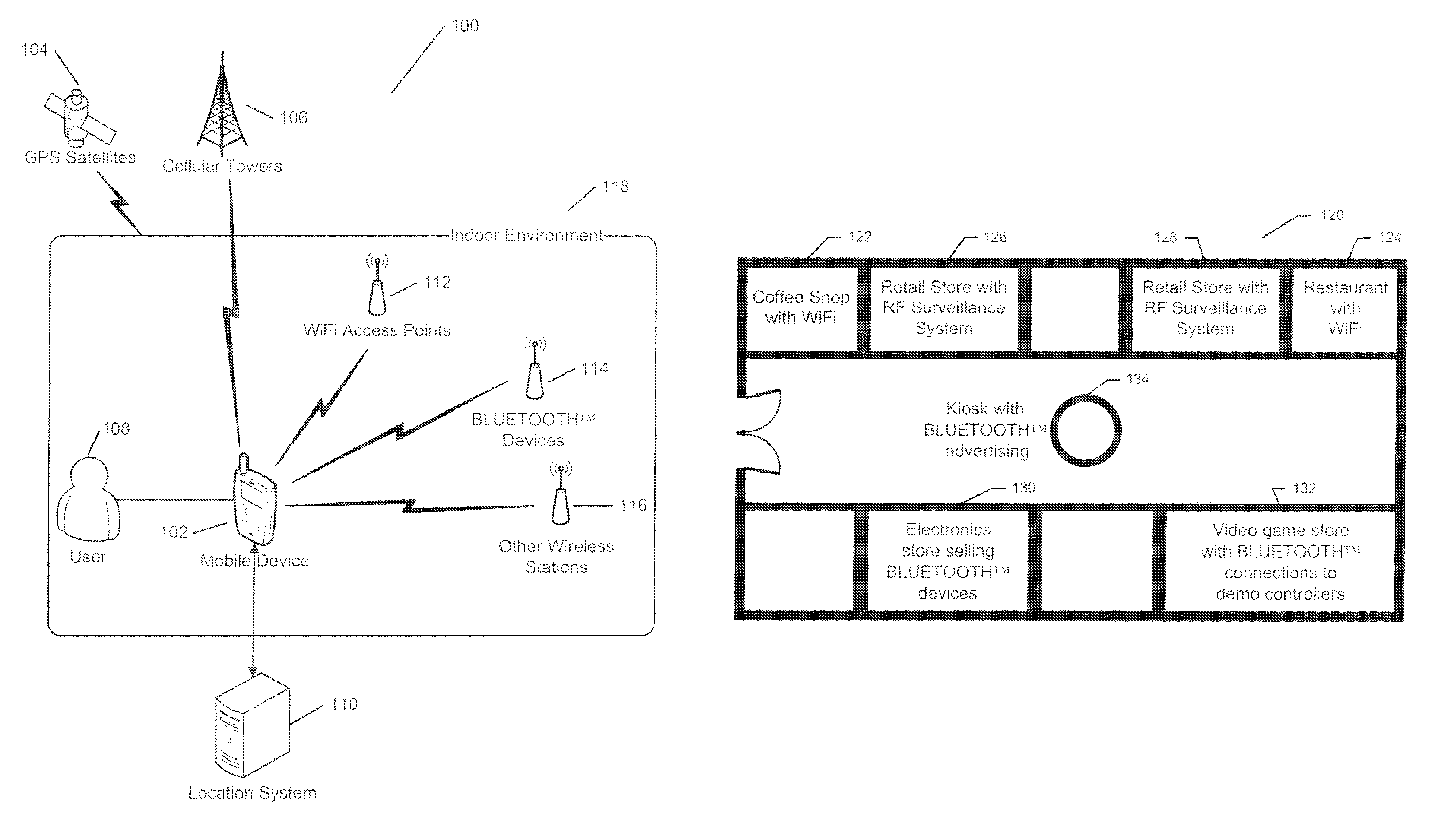Systems and methods for calibration based indoor geolocation
a technology of indoor geolocation and system and method, applied in the direction of location information based service, wireless commuication service, direction finder using radio waves, etc., can solve the problems of indoor environment toa techniques, high accuracy of distance estimation process, and failure of indoor environment traditional location techniques such as gps, so as to minimize calibration costs, facilitate on-going, and improve the accuracy of map points in the databas
- Summary
- Abstract
- Description
- Claims
- Application Information
AI Technical Summary
Benefits of technology
Problems solved by technology
Method used
Image
Examples
Embodiment Construction
[0046]To provide an overall understanding of the invention, certain illustrative embodiments will now be described, including systems and methods for indoor geolocation and calibration of a fingerprint database / map-point grid. However, it will be understood by one of ordinary skill in the art that the systems and methods described herein may be adapted and modified as appropriate for the application being addressed and that the systems and methods herein may be employed in other suitable applications, and that such other additions and modification will not depart from the scope thereof.
[0047]FIG. 1A is a schematic diagram of a system 100 for indoor geolocation, i.e. determining one's location in an indoor environment, according to an illustrative embodiment of the invention. FIG. 1B and FIG. 1C are examples of maps of indoor environments in which the system 100 may be used. The indoor geolocation system 100 includes a mobile device 102 and a location system 110. The user 108 uses th...
PUM
 Login to View More
Login to View More Abstract
Description
Claims
Application Information
 Login to View More
Login to View More - R&D
- Intellectual Property
- Life Sciences
- Materials
- Tech Scout
- Unparalleled Data Quality
- Higher Quality Content
- 60% Fewer Hallucinations
Browse by: Latest US Patents, China's latest patents, Technical Efficacy Thesaurus, Application Domain, Technology Topic, Popular Technical Reports.
© 2025 PatSnap. All rights reserved.Legal|Privacy policy|Modern Slavery Act Transparency Statement|Sitemap|About US| Contact US: help@patsnap.com



